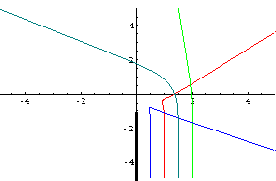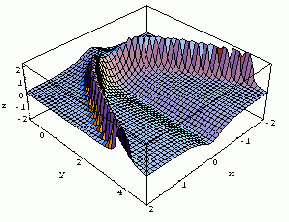

Sample Exams using the CLeaR Materials:
Multivariable Calculus at the
University of Maryland, College Park
Using mathematical software to enhance undergraduate
education.
One question which is often raised with regard to innovative teaching
materials is one of evaluation: how can one properly test students'
understanding? Indeed, it is much harder to test students on their
understanding of how to apply mathematical software to non-standard problems
than it is to test them on conventional pencil-and-paper computational
techniques. We have experimented at Maryland with two ways
of testing students on the CLeaR Mathematica materials in
multivariable calculus:
- Adding one or more problems to "conventional" calculus tests
that require students to interpret and analyze the output from a Mathematica
notebook;
- Giving "on-line" exams in a computer lab, where the student is given
a Mathematica notebook that is only partially complete, and is asked to
complete it with appropriate calculations and interpretative comments.
Note that we have tried as much as possible to conform to the
educational philosophy of the CLeaR project,
by emphasizing interpretation, not rote learning and not the ability
to quickly write computer code. (We strongly feel that the latter should
not be tested in mathematics courses. If it must be tested, it should
be tested in computer science courses instead.)
Sample Problems Using Paradigm 1
(for pencil and paper exams)
- Answer this question with the help of
Notebook 1
(also available
in Mathematica Notebook format).
Consider the curve parametrized by
r(t) = cos t i + sin t j
+ Sqrt[4 - sin^2 t] k.
- Why is it clear that v(t).a(t) = 0
whenever v(t).v(t) = 1?
- Determine the curvature and torsion of the curve at the points
r(0) and r(pi/2).
- Determine the Frenet frame (the unit tangent, normal, and binormal)
at the points r(0) and r(pi/2).
- It seems clear from the picture in the notebook that the curve
parametrized by r(t) is not planar. How is this
observation confirmed by the computations you have done in parts
(2) and/or (3)?
- Answer this question with the help of
Notebook 2
(also available
in Mathematica Notebook format).
- What is computed on output lines 2 and 3 of the notebook?
- What is computed on output line 4? What is the significance of the
I's that occur?
- List all critical points of the function
f(x, y) = x^2 y + 2x y^2
- 3y + y^4
in the xy-plane, and classify each as a relative maximum, a
relative minimum, a saddle point, or none of these.
- Locate all the critical points of f on the contour plot in the
notebook.
- Answer this question with the help of
Notebook 3
(also available
in Mathematica Notebook format).
- What simple identities about the curl and gradient are being
proved in the notebook? (State the result in standard mathematical
notation, not in Mathematica input form.)
- Use the identities to compute
curl[(x^3 + y^3 + z^3)(x i +
y j + z k)].
Sample Notebooks Using Paradigm 2
(for on-line exams)
Comments may be
directed to the authors at the following addresses.
Kevin Coombes (krc@math.umd.edu)
Ron Lipsman (rll@math.umd.edu)
Jonathan Rosenberg (jmr@math.umd.edu)

